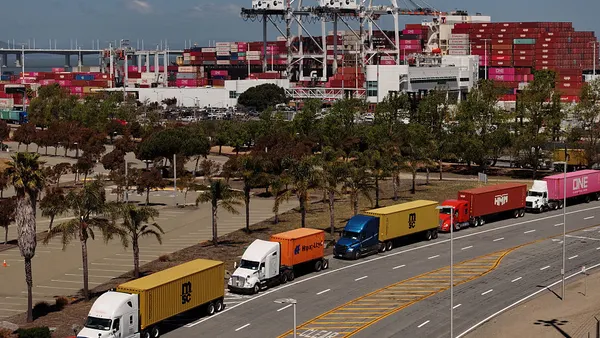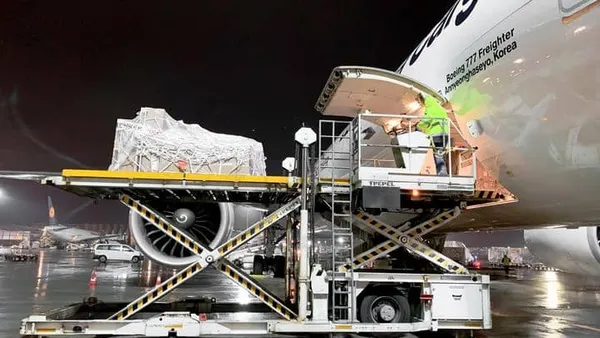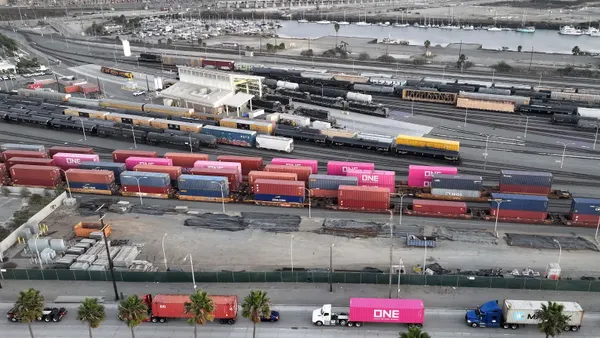Dive Brief:
- The worst of the container shipping downturn has passed, at least according to Maersk Line CFO Jakob Stausholm, in an interview with The Wall Street Journal.
- A.P. Moller-Maersk recorded a 4.4% increase in freight rates during Q1 2016, and a 10% increase in revenue and volumes since May 2016. However, an 80% fuel price increase led the line to lose $80 million in the first quarter, despite recording a $32 million profit last year.
- Maersk believes that container demand will rise approximately 4% throughout 2017 while capacity increases to 3.5%, and is aiming to reach $1 billion more profits than 2016.
Dive Insight:
Volumes are rising, ships have been scrapped, and fewer albeit larger vessels are carrying containers: demand is up while supply decreases, driving freight rates up and shipping lines to profit. At last.
"The container market is clearly improving," A.P. Moller-Maersk CEO Soren Skou said in an earnings call to investors. "Demand grew 4% to 5% in the quarter, and supply grew around 1%, which makes the first quarter of [2017] the second quarter in a row where we saw demand growth significantly outpacing supply growth." As a result, East-West freight rates increased by 23.2%, or $398, compared to last year, according to the company's presentation.
An increase in freight rates is a fundamental part of the company's strategy to improve profitability, which will seek to reduce costs and improve synergies over gaining further market share. This strategy also includes a full-speed approach toward digitization, in an effort to provide full supply chain solutions rather than just transport services.
When asked about the congestion in China after the alliance reshuffle, Skou admitted to some logistical challenges and the subsequent costs. "We missed connections, containers that are rolled and so on in the hub ports," he said. "It's not really something that is very helpful for us and for our customers. And in general, I'm not a strong believer in having a crappy product so you can charge more."
Maersk Line's results are not the only ones suggesting an improvement in market conditions for the container shipping industry. Hapag-Llloyd recorded 6.8% greater transport volumes and 10.4% greater revenue from last year's first quarter, and said the line increased rates at the end of the quarter. Meanwhile, ports on both U.S. coasts recorded higher volumes.
However, questions remain as to whether improved conditions will last or if the lines are being too optimistic without correcting their utilization problems.













